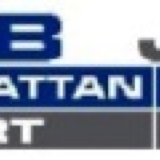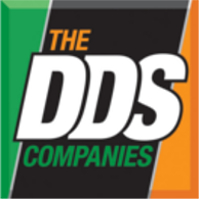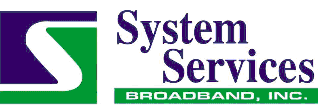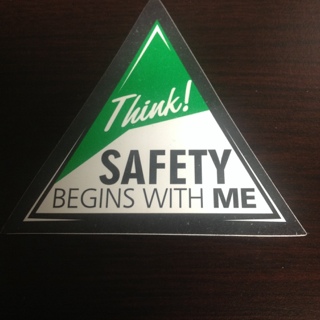Information
-
Location
-
TCC Location
- COH-Springfield (0651)
- COH-Wintersville (0731)
- COH-Bellaire (0732)
- COH-East Liverpool (0733)
- COH-Columbus SE (0822)
- COH-Columbus NE (0823)
- COH-Columbus NW (1324)
- COH-Columbus Central & SW (1325)
- COH-Alliance (0971)
- COH-Findlay (1031)
- COH-Fremont (1053)
- COH-Firelands (1054)
- COH-Toledo (1121)
- COH-Lorain (1222)
- COH-Middleburg HTS (1261)
- COH-New Lexington (1424)
- COH-Zanesville (1441)
- COH-Cambridge (1442)
- COH-Coshocton (1443)
- COH-Newark (1451)
- COH-Athens (1521)
- COH-Chillicothe (1531)
- COH-Jackson (1533)
- COH-Portsmouth (1541)
- COH-Mansfield (1721)
- COH-Marion (1732)
- COH-Mt. Vernon (1743)
- COH-Ironton (1943)
- CMD-Hagerstown (2141)
- CMD-Cumberland (2151)
- CPA-Greencastle (2171)
- CPA-Mt. Lebanon (2221)
- CPA-Rochester (2231)
- CPA-Emleton (2232)
- CPA-New Bethlehem (2234)
- CPA-Warren (2239)
- CPA-Smithfield (2321)
- CPA-Washington (2391)
- CPA-York (2421)
- CPA- New Castle (2231)
- CPA-State College (2451)
- CPA-Bradford (2238)
- CMA-Brockton (8100)
- CMA-Springfield (8200)
- CMA-Ludlow (8710)
- CMA-Brockton-Meadow Ln. (8730)
- CMA-Easton (8720)
- CMA-Northampton (8201)
- CMA-Lawrence (8400)
- CPA- Uniontown/Connellsville
- People's Natural Gas (PNG)
- CPA- Central
-
Performing Work For:
-
Prepared by
-
Contractor Company Name
- Alex E. Paris Contracting Company, Inc.
- Allegheny Contracting, LLC
- Banks Gas Services, Inc.
- Buckeye Utility Services, LLC
- C.J. Hughes Construction Company, Inc.
- Casper Colosimo & Son, Inc.
- Dekatherm, Inc.
- Feeney Brothers Excavation, LLC
- InfraSource Construction Services, LLC
- InfraSource Construction, LLC
- Kinsley Construction, Inc.
- KS Energy Services, LLC
- Lineal Industries, Inc.
- M. O'Herron Company
- Michels Corporation
- Mid-Ohio Pipeline Company, Inc.
- Miller Pipeline Corporation
- Minnesota Limited
- New England Utility Constructors, Inc.
- NPL Construction Company
- R&R Pipeline, Inc.
- R.L. Coolsaet Construction Co.
- RH White Construction Company, Inc.
- Riley Brothers, Inc.
- RLA Investments, Inc.
- Robert J. Devereaux Corporation
- Southeast Connections, LLC
- Stanley Pipeline, Inc.
- The Fishel Company
- Utility Line Services, Inc.
- W.E. Curling, Inc.
- AWP
-
Contractor Foreman (Last Name, First Name)
-
Contractor Employee(s) (CREW) (Last Name, First Name)
-
Company Crew Involved?
-
Company Crew Leader Name (Last Name, First Name)
-
Crew Members (Last Name, First Name)
-
Conducted on
-
Document No.
Task Specific Operations/JHA Evaluation
Shoveling and Raking Soil
-
Shoveling/raking
-
Employees properly inspect the shovel/rake and ensure that it is in operative condition (free of cracks and splintered edges, blade in good condition)
-
Employees use shovel/rake properly following manufacturers recommendations
-
Employees maintain proper body positioning when shoveling/raking
-
Employees maintain proper footing
-
Employee does not jump and stomp on shovel
-
Employees maintain good grip on shovels/rakes
-
Employees recognize buried utility lines and use shovel to dig around structures
-
Employees properly stores shovels/rakes placing the blade downward
Power Tool Usage
-
Power Tool Usage
-
Employees inspect power tool prior to usage
-
Employees follow manufacturers recommendations when operating and servicing equipment.
-
Employees choose correct tool for the job. If cutting, employees use correct blade, and ensures that saw-zaws are not being used to cut active steel gas lines.
-
Employees use tools that are intrinsically safe.
-
Employees ensure that all electrical components are not damaged. Cord is not damaged or frayed, and ground prong is in place.
-
Employees keep all guards and auxiliary handles on power tools.
-
While operating, employees maintain good grip.
-
Employees maintain adequate footing and body positioning when operating.
-
Employees keep hands away from point of operation while operating.
-
if cutting or drilling, employees inspect the cutting or drilling edge prior to use.
-
if binding occurs, employees stop, assess the situation, and corrects the issue.
-
While operating, employees maintain adequate body pressure on the tool.
-
Employees don proper PPE for the job. When cutting or drilling, safety glasses are worn at all times.
Hand Tool Usage
-
Hand Tool Useage
-
Employees inspect hand tools prior to usage. All tools in safe operative condition.
-
Employees use the correct tool for the job.
-
Handles are free of cracks and splintered edges.
-
Jaws on wrenches are not sprung.
-
Impact tools (chisels) are not mushroomed.
-
Screwdrivers are not used as impact tools.
-
Employees pull wrenches towards the body and does not push.
-
Employees maintain adequate body positioning and proper footing when operating.
-
Employees maintain good grip on tools wen operating.
-
Employees don correct PPE for the job.
-
Employees keep hands away from pinch point areas when operating.
-
Employees use caution when operating, keeping hands away from the point of operation.
Vac Truck Air Striking (blasting)
-
Air Striking Operations
-
Employees follow manufacture's recommendations when operating
-
Employees have Whip Check Safety Cords on all air hose connections
-
Employees maintain good grip on tool when operating
-
Employees maintain good body positioning and proper footing when operating
-
Employees wear proper PPE when operating. (Safety vest, hardhat, steel toed boots, ear plugs safety glasses)
-
Employees bleed all lines prior to disconnecting tool from air hose connections
Vac Truck Vacuum Hose Operation
-
Vacuum Hose Operations
-
Operator maintains good body positioning and footing when vacuuming
-
Operator avoids excessive bending and twisting of the back
-
Operator wears proper PPE when operating (Safety glasses, safety vest, hardhat, steel toed boots, ear plugs, and face shield as applicable)
-
If hose becomes clogged, operator assess the situation and properly unclogs the hose by striking the hose with a hammer. Operator uses caution when striking, and keeps hands away from line of fire.
Pogo and Whacker Operations
-
Pogo/Whacker Operations (Tamping coal patch and soil)
-
Employees inspect equipment prior to use.
-
Employees use proper equipment for the job. Pogo is recommended for coal patches, etc.
-
Employees wear proper PPE while operating. (Safety Vest, hardhat, steel toed boots, safety glasses, ear plugs, metatarsals)
-
If using the whacker, employees utilize assisted lifting techniques to carry machine.
-
Safety Whip Check Safety Cords are on all air hose connections.
-
Employees maintain control over the machine
-
Employees maintain good body positioning and adequate footing while operating.
-
Employees keep feet away from tamping baseplate.
Concrete Cutting
-
Concrete Saw Cutting
-
Employees inspect equipment prior to usage
-
Employees do not drop start the machine
-
Employees follow manufactures recommendations while using equipment, and have all guards on the machine
-
Employees use wet methods to reduce exposure to Silica Dust while operating machinery
-
Employees use proper PPE while using machine, including hardhat, ear plugs, dust masks, safety glasses, safety vest, and steel toed boots
-
Employees identify and react to hazardous situations while operating
Jackhammering
-
Jackhammering
-
Employees properly secure jackhammer to vehicle. Chains and locks are used.
-
Jackhammer chains and locks are inspected for securement on vehicle, if applicable.
-
Employees properly remove jackhammer from truck and move to desired position, maintaining good body positioning and using assisted lifting techniques.
-
Employees inspect jackhammer prior to use.
-
Operates ensure all Whip Check Safety Cords are on all air hose connections.
-
Operators use machinery according to manufacturers recommendations.
-
Operators ensure work area is marked and One Call was made.
-
Operators don proper PPE which include hardhat, safety glasses, high visibility vest, steel toed boots, and metatarsals.
-
Operator maintains adequate body positioning when operating jackhammer, keeping control over the machine.
-
Operators does not jackhammer when spotter is in an excavation, or when he/she is in a prone position to get struck by the point of operation of the machine.
-
Operators react to underground utilities.
Directional Drilling (mainline)
-
Directional Drilling
-
Employees demonstrated proper hauling of equipment to jobsite. all chains, spring hooks, in good condition. Proper tie down utilized, and Emergency brake cable used.
-
Employee safely moves drill off of trailer and into desired position, using spotters, maintaining proper footing, and maintaining 360 degree awareness.
-
Employee properly grounds the machine
-
Employee is OQ qualified to operate
-
Employee demonstrates proper methods to operate machine following the gas standards and manufactures recommendations.
-
Operators use outriggers while drilling
-
Drilling area is properly marked and One Call was made.
-
Operator reacts to underground utilities and does not perform drills if underground structures are within the drilling path.
-
Operator reacts to landscapes, achieves proper depth, and adjusts depth of the bore as needed.
-
Operator uses bore gel mix, and demonstrates proper procedures in order to fill bore gel tank with a mixture of water and gel.
-
All hydraulic hoses in good condition and bled prior to disconnection. Designated person utilized to operate valves.
-
Spotters are utilized in order to locate the drill at exact depth and location. Spotter demonstrates ability to read and understand electronic readout of the locator, and maintains communication with the drill operator.
-
Operators back ream as needed, demonstrate proper procedures when back reaming, and react to landscape as applicable.
-
Operators back ream no larger than 1.5 X the pipe diameter
-
Employees use weak link on pulls 50 ft. or greater
-
Employees install tracer wire on pipe. Use safe methods while installing.
-
Employees handle pipe and materials with caution and use assistive devices as needed
-
Employees pull pipe through bore hole to minimize pipe deflection and damage.
-
Spotters are used on pulls and communicate effectively with the drill operator (two way radio used)
Boring (with Pneumatic Piercing Tool/ Mole)
-
Pneumatic Piercing Tool
-
Properly mark and measure desired piercing length of hose with electrical tape
-
Employees inspect equipment prior to usage
-
Employees ensure correct lubrication is added to oiler
-
All Whip Check Safety Cords on all hair hose connections
-
Employees ensure all shut off valves are in operative condition
-
Employees inspect oiler and other components to ensure safe operative condition
-
Employees use spotters while operating to prevent potential damages and equipment malfunction
-
1 Designated employee operates valves
-
Employees follow manufacturers instructions for maintenance and operations
-
Employees use proper lifting techniques while moving the tool into desired location for drilling
-
Employees keep hands away from drilling edge and pinch point areas
-
Employees use caution when guiding the tool into the ground to start piercing operations
-
Employees maintain proper body positioning while guiding
-
Employees recognize and react to underground utilities
-
Employees properly reverse drill direction using 1 designated person
-
Employees bleed all valves prior to disconnected air hoses
Excavating and Backfilling Ditch
-
Excavator Operations
-
Proper hauling of equipment. Proper tie down methods, and all chains, spring hooks, and cables inspected
-
Operators load and unload equipment safely off of trailers. Spotters are used, and equipment is moved in a manner that reduces the risk for rollover. Operator avoids situations where center of gravity of machine exceeds the fulcrum point resulting in potential rollovers.
-
Operator is OQ qualified
-
Work area is properly marked and One call was made.
-
Fire extinguisher is present and UPWIND of the excavation.
-
Employees properly inspect the excavator prior to use and is in operative condition. Performs maintenance on machine as required.
-
Operator utilizes proper PPE while operating machine, and does NOT wear a safety vest or loose clothing while operating.
-
Operator unloads equipment off of the trailer and into desired position safely and effectively using designated spotters
-
Operator inspects work area and identifies and avoids unstable ground when operating to prevent rollover.
-
Operator maintains adequate communication with spotters at all times during operation, and is aware of blind spots.
-
Operator reacts to buried utility lines to prevent damages.
-
Hand tools are used to dig around buried utilities.
-
Operator demonstrates ability to operate machine effectively and in accordance with manufacturers recommendations.
-
Operator maintains safe distance away from overhead structures and power lines (minimum of 10 ft.)
-
Once work is complete, Operator backfills excavation with proper backfill material, and installs caution tape, and marker ball 6-12 inches fro the buried utility line.
-
After operation, Operator places boom on the ground, and places machine in a stable position.
Bobcat Skid Steer Operations
-
Skid Steer Operations
-
Machine properly tied down to trailer. All hooks, chains, and safety pins in place and in good condition.
-
Machine inspected prior to use and in operative condition. Maintenance of machine is performed as needed.
-
Operator is OQ qualified
-
Operator wears proper PPE and does NOT wear Safety Vest or loose clothing
-
Operator maintains 360 degree awareness when operating and is aware of any blind spots.
-
Spotters are used during operation
-
Skid Steer is used to haul heavy equipment to work area. Equipment is properly secured in bucket.
-
Proper methods of machine operation is utilized and operator follows manufacturer's recommendations.
-
Once work is complete, operator places bucket on the ground, puts the machine in park, and sets emergency brake.
Storing and Handling Gas Piping
-
Pipe Handling and Storage
-
Pipe handled with caution to prevent damages and pipe deflection
-
Assistive devices used to handle pipe as applicable
-
Employees demonstrate proper body positioning when handling pipe.
-
Pipe stored in a safe accessible location
-
Pipe does not pose tripping hazards
-
Pipe is properly chocked
Cutting Gas Pipelines
-
Pipe Cutting
-
Proper cutting methods are used.
-
Employees properly support pipe in a vice or clamp.
-
Employees use intrinsically safe tools and does not cut using a saw-zaw on an active gas line.
-
Employees use correct cutting tool for the job. Pipe cutters are used for best practice.
-
Safety glasses used at all times when cutting
-
Employees demonstrate safe use of tools when cutting.
-
The cutting tool is properly inspected and in operative condition.
-
Employees use caution while cutting and keeps hands away from the cutting edge and point of operation.
-
Employees demonstrate correct body positioning when cutting and maintain good grip on tools.
-
Correct saw-zaw blade was utilized if applicable, and is in operative condition.
-
If binding occurs, employees stop operation, assesses the situation, and takes proper corrective actions.
Carving Nipples and Threading Pipe
-
Nipple Carving
-
Operator is OQ qualified.
-
Pipe Vice is used and is in good operative condition.
-
Generator is GFCI protected or GFCI pigtails are used.
-
GFCI pigtails are tested and inspected prior to use. Tagged Out Of Service as required.
-
Minimal trip/fall hazards. Extension cords not draped in walk areas.
-
Extension cords are inspected and in operative condition. The machine is properly grounded and cords are not frayed and damaged.
-
All tools and equipment inspected prior to use and in operative condition
-
Operator maintains control over tools and machine while operating.
-
Operator uses proper lubrication while carving
-
Operator uses caution while operating machinery and recognizes and avoids pinch points and areas around the point of operation.
-
Operator follows manufacturers recommendations while using machinery and performs maintenance on machine as required.
-
Chains are used to strap pipe to vice.
-
Catch basins are used to catch metal shavings.
Flagging Operations
-
Flagging
-
Flaggers are OQ qualified through PennDOT guidelines
-
Flaggers properly set up the 5 area's of a work zone which include the advanced warning area, transition area, buffer area, work area, and termination area, in the correct order.
-
Flaggers maintain 360 degree awareness while setting signs and cones up, and anticipate and react to traffic patterns
-
Flaggers properly set up road work signs 500 ft. apart following PUB 213 and MUTCD guidelines.
-
Flaggers properly set up the tapper which incudes a minimum of 6 devices, or cones, and is at least 50 ft. in length.
-
Flaggers utilize proper equipment to direct traffic. Slow/Stop paddles are used for one or two lane traffic, meeting MUTCD guidelines, and Red Flags are used in intersections and emergencies ONLY.
-
Flaggers use arrow boards that meet MUTCD guidelines when applicable.
-
Flaggers demonstrate ability to direct traffic using the proper methods, and following PennDOT guidelines.
-
Flagger positioning is 40 ft. away from the tapper area.
-
Flaggers communicate effectively with one another to direct traffic with the use of a 2 way radio, and have no other duties.
-
Flaggers utilize proper PPE including hardhat, class 2 high visibility safety vest, and steel toed boots.
-
While directing traffic, flaggers maintain 360 degree awareness, but face on coming traffic at all times.
-
Flaggers have an escape route
-
Flaggers do not put slow/stop paddle in a cone for support.
-
Flaggers are equipped with air horns to alert workers of potential work zone encroachment.
-
Flaggers are not texting or on the phone while flagging.
-
Flaggers are relived for bathroom breaks periodically.
-
Flaggers are the first and last employees on the jobsite
-
When work is complete, flaggers remove all signs and cones, in the correct sequence.
Restoration
-
Topsoil and Restoration
-
All PPE worn including hardhats, safety vests, and boots.
-
Employees inspect tools and equipment prior to use.
-
All tools and equipment are in good operative condition.
-
Employees demonstrate ability to use tools and equipment correctly.
-
Wheels chocked
-
Employees properly use spotters when backing if applicable
-
Employees recognize correct and avoid potential hazards on the job
-
While shoveling from dump trucks, employees stay clear of line of fire, and are not positioned in a manner that exposes them to get hit with spoil.
Final Page
-
Further Action Required
-
General comments
-
Safety Coordinator Signature












